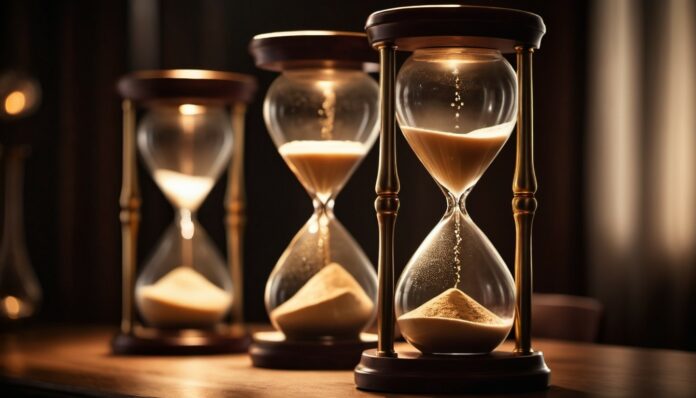In this article, we present to you the most interesting facts about hourglasses. An hourglass is a device that measures time. It consists of two glass bulbs connected by a small opening. One of the bulbs contains grains of fine dry sand. The sand flows from the upper bulb to the lower one over a set period.
When all the sand has flowed from the upper bulb, the hourglass is turned over, and the sand begins to flow into the empty bulb as before. Some earlier hourglasses contained mercury, but sand works better because it flows at a consistent rate, regardless of the amount of sand in the bulb.
Interesting Facts About Hourglasses
Factors that influence the amount of time an hourglass measures include the volume of sand, the size and angle of the bulbs, the width of the neck, and the type and quality of the sand. Hourglasses are usually made of blown glass, with a bulb at each end connected by a “neck” and mounted in a frame that allows them to stand vertically, while the bulbs contain many tiny grains that fall from one bulb to another.
Hourglasses replaced water clocks because they did not spill with sudden movements, did not evaporate, condense, or freeze at certain temperatures, as was the case with water clocks (clepsydra). In the modern era, hourglasses are more commonly used for decorative purposes or to time specific activities, such as cooking eggs or tasks in board games, which do not require precise time measurement.
In hourglasses, “sand” often is not real sand but rather powdered stone, marble dust, silica, or tiny glass beads. Another fact about hourglasses is that they often use zinc dust as well. Although ancient Greeks, Romans, and other cultures had the technology to produce glass for creating hourglasses, there is no concrete evidence of their existence in ancient times. Since hourglasses were one of the few reliable methods of measuring time at sea, it has been suggested that they were used as early as the 11th century.
Hourglasses are short-term timekeepers. The very name implies that it is difficult to make one that works for more than an hour. Why did hourglasses appear so late? Perhaps they had to wait until their opposite, the mechanical clock, was invented.
Clocks and hourglasses create technological balance. Either one without the other would provide an unbalanced metaphor, and this subtle fact may be much more important than it might seem (more details about hourglasses on Wikipedia).
It is said that the first hourglass was invented by a French monk named Liutprand in the 8th century AD. However, concrete evidence of this revolutionary new form of clock, which measures time by the sand falling from one glass bulb to another, first appeared in the inventory of European ships in the 14th century.
Medical workers (including doctors) use miniature hourglasses with durations of half a minute or one minute to count pulses and for other medical procedures. The practice of using such clocks was especially popular until the 19th century.
